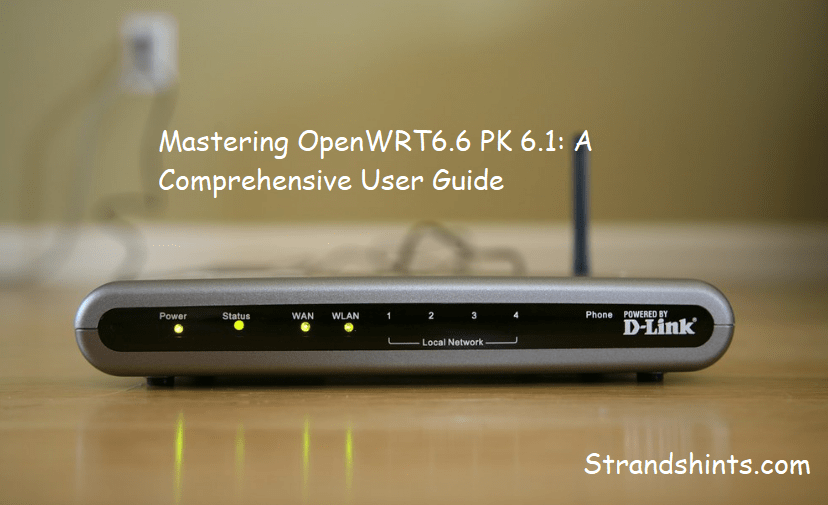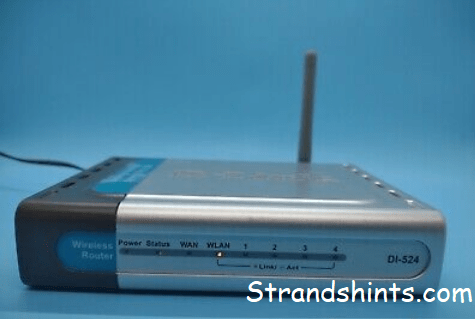Table of Contents
Introduction
In the ever-evolving world of networking, OpenWRT has established itself as a powerful tool for users seeking customization and flexibility in their router firmware. This guide will focus on OpenWRT6.6 PK 6.1, helping you navigate its features and functionalities. Whether you’re a beginner eager to learn or an experienced user looking to optimize your setup, this comprehensive guide will provide you with all the necessary information to master OpenWRT6.6 PK 6.1.
What is OpenWRT?
OpenWRT is an open-source Linux-based firmware primarily designed for routers. It offers users the ability to customize their router settings far beyond what standard firmware allows. With OpenWRT, you can enhance your network’s performance, increase security, and add new functionalities through a wide range of packages.
Key Features of OpenWRT6.6 PK 6.1
- Customizable Interface: OpenWRT6.6 PK 6.1 features a web interface that allows users to customize settings easily.
- Package Management: Install and manage additional software packages to extend the functionality of your router.
- Advanced Networking Features: Enjoy capabilities like VLAN support, advanced QoS settings, and VPN integration.
- Security Improvements: Benefit from enhanced security features, including firewall configurations and intrusion detection systems.
- User Community: Join a robust community of users who share experiences, tips, and troubleshooting advice.
Getting Started with OpenWRT6.6 PK 6.1
1. Compatibility Check
Before diving into the installation process, ensure that your router is compatible with OpenWRT6.6 PK 6.1. Visit the OpenWRT website to find a list of supported devices. Confirming compatibility will save you time and prevent potential issues during installation.
2. Preparing for Installation
Before you start the installation, prepare the following:
- Router: Ensure your router is powered on and connected to the internet.
- Computer: Have a computer or laptop ready to download and upload the firmware.
- Backup Current Settings: Save your existing router settings in case you need to revert.
3. Downloading OpenWRT6.6 PK 6.1
Visit the official OpenWRT website and navigate to the downloads section. Find OpenWRT6.6 PK 6.1, select your router model, and download the appropriate firmware image file.
4. Flashing the Firmware
- Access the Router’s Interface: Open your web browser and enter your router’s IP address (usually 192.168.1.1) to access the management interface.
- Login: Use your admin credentials to log in. If you haven’t changed them, refer to your router’s manual for the default username and password.
- Navigate to Firmware Upgrade: Look for a section called “System” or “Firmware Upgrade.”
- Upload the OpenWRT6.6 PK 6.1 Image: Select the downloaded firmware file and start the flashing process. This may take several minutes. Do not interrupt the process; your router will reboot automatically.
5. First Login to OpenWRT6.6 PK 6.1
After flashing, your router will reboot. You can access the OpenWRT interface by entering 192.168.1.1 in your web browser. The default username is usually “root,” and the password may be blank initially.
Navigating the OpenWRT Interface
Once logged in, you will see a user-friendly interface that may be overwhelming at first. Here’s a breakdown of the key sections:
1. Status Overview
This section provides real-time information about your router’s status, including the internet connection, connected devices, and network traffic.
2. Network Configuration
Configure your network settings here, including:
- WAN Settings: Set up your internet connection type (DHCP, static IP, PPPoE, etc.).
- LAN Settings: Manage your local network settings, including DHCP settings and static IP assignments.
- Wireless Settings: Configure your Wi-Fi networks, including SSID, security settings, and channel selection.
3. System Management
This area includes options for:
- System Upgrade: Keep your firmware up to date with the latest security patches and features.
- Backup and Restore: Create backups of your configuration settings for future use.
- Administration: Change passwords, manage user accounts, and configure remote access.
4. Package Management
One of the standout features of OpenWRT6.6 PK 6.1 is its package management system. Here’s how to use it:
- Installing Packages: Navigate to the “Software” section. Search for packages that enhance your router’s capabilities, like VPN clients, ad blockers, or monitoring tools. Select and install the desired packages.
- Managing Installed Packages: View all installed packages, update them, or remove those that you no longer need.
Optimizing Your OpenWRT6.6 PK 6.1 Setup
1. Enhancing Wireless Performance
To improve your Wi-Fi performance, consider the following:
- Channel Selection: Use tools like Wi-Fi analyzers to find the least congested channel.
- Bandwidth Management: Implement Quality of Service (QoS) settings to prioritize bandwidth for important devices.
2. Implementing Security Features
Security should be a top priority. Here’s how to enhance your router’s security:
- Change Default Passwords: Update the default credentials to prevent unauthorized access.
- Enable Firewall: Make sure your firewall is active to block unwanted traffic.
- VPN Setup: Consider setting up a VPN for additional privacy when browsing.
3. Monitoring Network Traffic
Keep an eye on your network activity using built-in tools or third-party packages. Regular monitoring can help you identify unusual traffic patterns that may indicate security issues.
4. Custom Scripts and Automation
With OpenWRT6.6 PK 6.1, you can create custom scripts to automate tasks such as rebooting the router at specific intervals or managing network traffic during peak hours.
Troubleshooting Common Issues
1. Internet Connection Problems
If you experience connectivity issues, check the following:
- WAN Configuration: Ensure your WAN settings are correctly configured.
- Physical Connections: Confirm that cables are securely connected.
2. Accessing the Router Interface
If you cannot access the router’s interface:
- Check IP Address: Make sure you are entering the correct IP address.
- Clear Browser Cache: Sometimes, clearing your browser cache can resolve access issues.
3. Slow Wi-Fi Speeds
If your Wi-Fi is slower than expected:
- Channel Interference: Change the Wi-Fi channel to avoid interference from other networks.
- Reboot the Router: A simple reboot can often resolve temporary slowdowns.
Conclusion
Mastering OpenWRT6.6 PK 6.1 opens up a world of possibilities for enhancing your home network. With its customizable features and robust community support, you can tailor your router to meet your specific needs. By following the steps outlined in this guide, you are well on your way to becoming proficient in OpenWRT, ensuring a secure, fast, and reliable internet connection for all your devices. Embrace the power of OpenWRT6.6 PK 6.1 and enjoy the benefits of a truly optimized home network.
FAQs about OpenWRT6.6 PK 6.1
1. What is OpenWRT6.6 PK 6.1?
OpenWRT6.6 PK 6.1 is an open-source router firmware that provides users with advanced customization options for their networking devices. It enhances performance, security, and functionality beyond what standard firmware offers.
2. Is OpenWRT6.6 PK 6.1 compatible with my router?
To determine compatibility, visit the official OpenWRT website and check the list of supported devices. If your router is listed, you can safely install OpenWRT6.6 PK 6.1.
3. How do I install OpenWRT6.6 PK 6.1 on my router?
Installation involves downloading the appropriate firmware image from the OpenWRT website, accessing your router’s management interface, and uploading the firmware file through the firmware upgrade section.
4. What are the benefits of using OpenWRT6.6 PK 6.1?
Benefits include improved security features, customizable settings, a wide array of installable packages, and enhanced network performance through advanced configurations like Quality of Service (QoS).
5. Can I revert back to my original firmware after installing OpenWRT6.6 PK 6.1?
Yes, you can revert to your original firmware by downloading the firmware image for your device and uploading it via the router’s web interface, similar to the installation process.







